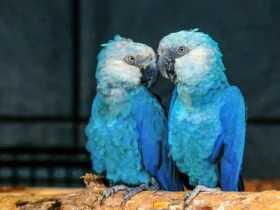In the world of domestic pigeons, few breeds captivate bird enthusiasts and breeders like the Fantail Pigeon. Renowned for its striking appearance and graceful demeanor, this charming bird has been bred for centuries and is beloved for its distinctive fan-shaped tail and elegant postures. In this article, we explore the captivating allure of the Fantail Pigeon and delve into its history, characteristics, and appeal in the world of fancy pigeons.
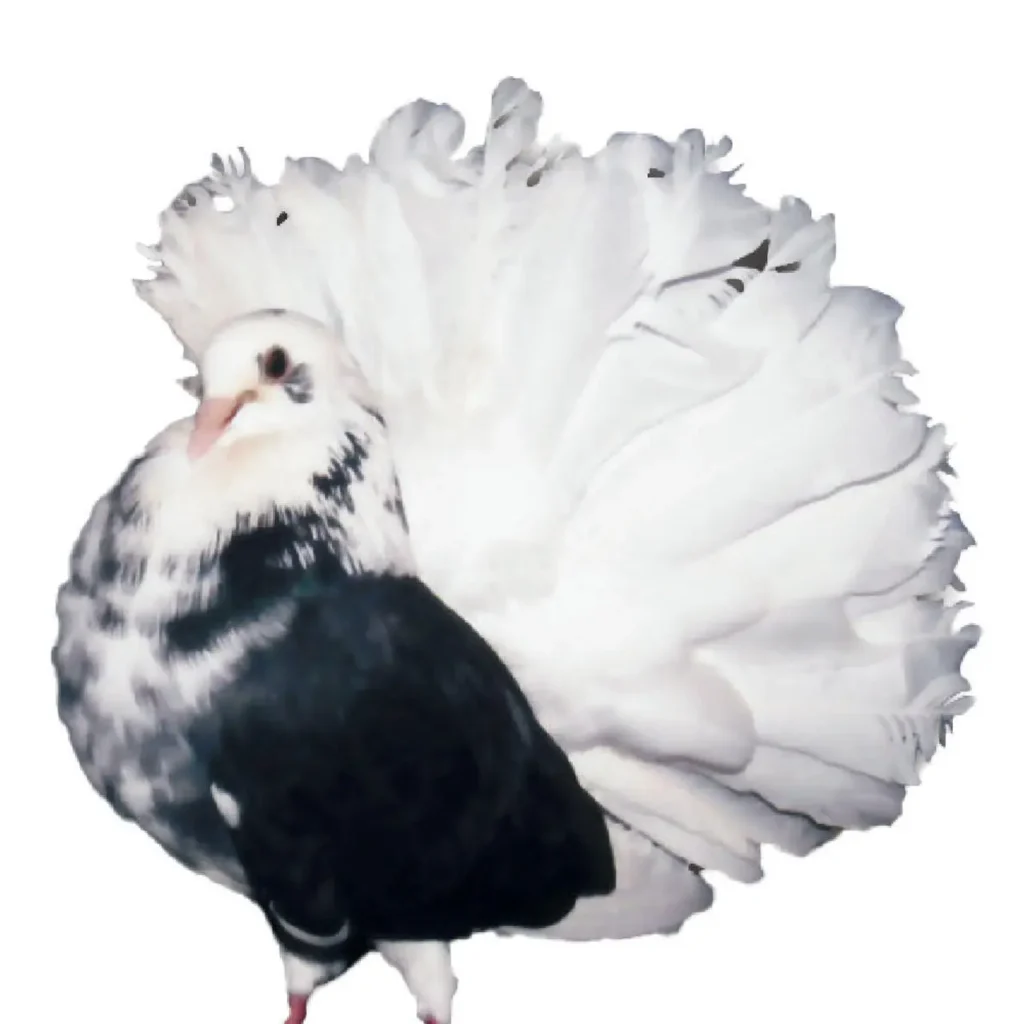
A Breed with a Rich History
The origins of the Fantail Pigeon can be traced back to the ancient land of India, where it is believed to have been bred and revered for its beauty and grace. Over time, the breed found its way to Europe, where it gained popularity among pigeon enthusiasts and became a favorite subject for artists and painters. Today, Fantail Pigeons are cherished and exhibited in pigeon shows and competitions worldwide, showcasing their refined traits and allure.
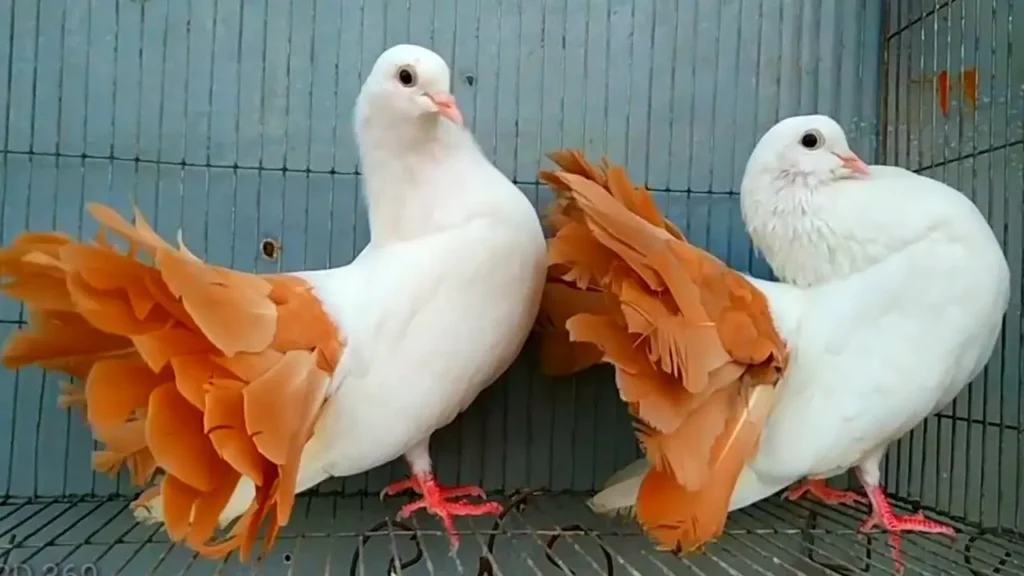
Distinctive Characteristics
The most defining feature of the Fantail Pigeon is its exquisite fan-shaped tail, which consists of numerous well-spread feathers forming a beautiful, sweeping display. This unique tail structure sets it apart from other pigeon breeds and has earned the Fantail its name. When the pigeon is in motion or performing its characteristic courtship display, the tail feathers spread wide, creating a captivating spectacle.
In addition to its tail, the Fantail Pigeon is admired for its compact and rounded body, elegant neck arch, and expressive eyes, which give it a regal and charming appearance. The breed comes in various colors and patterns, further adding to its visual appeal and diversity.\
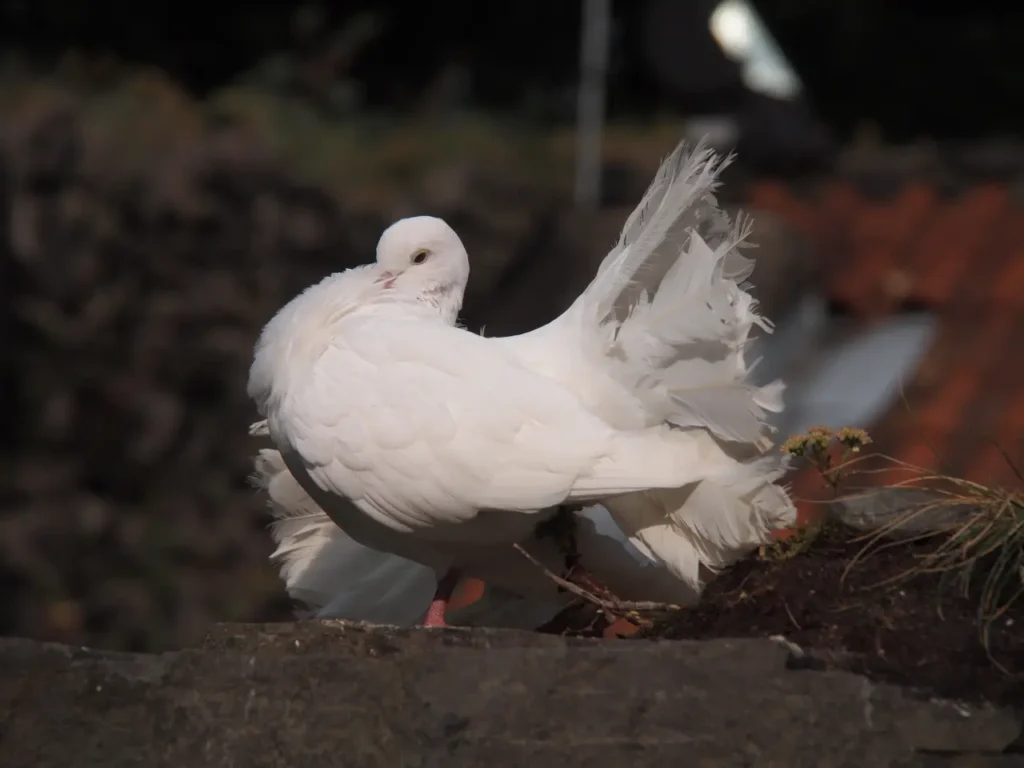
Temperament and Behavior
Beyond its physical beauty, the Fantail Pigeon is also known for its calm and gentle temperament. These birds are typically docile and easy to handle, making them popular pets among pigeon fanciers. Their peaceful nature and ability to coexist with other pigeons and birds make them suitable for aviaries and outdoor enclosures.
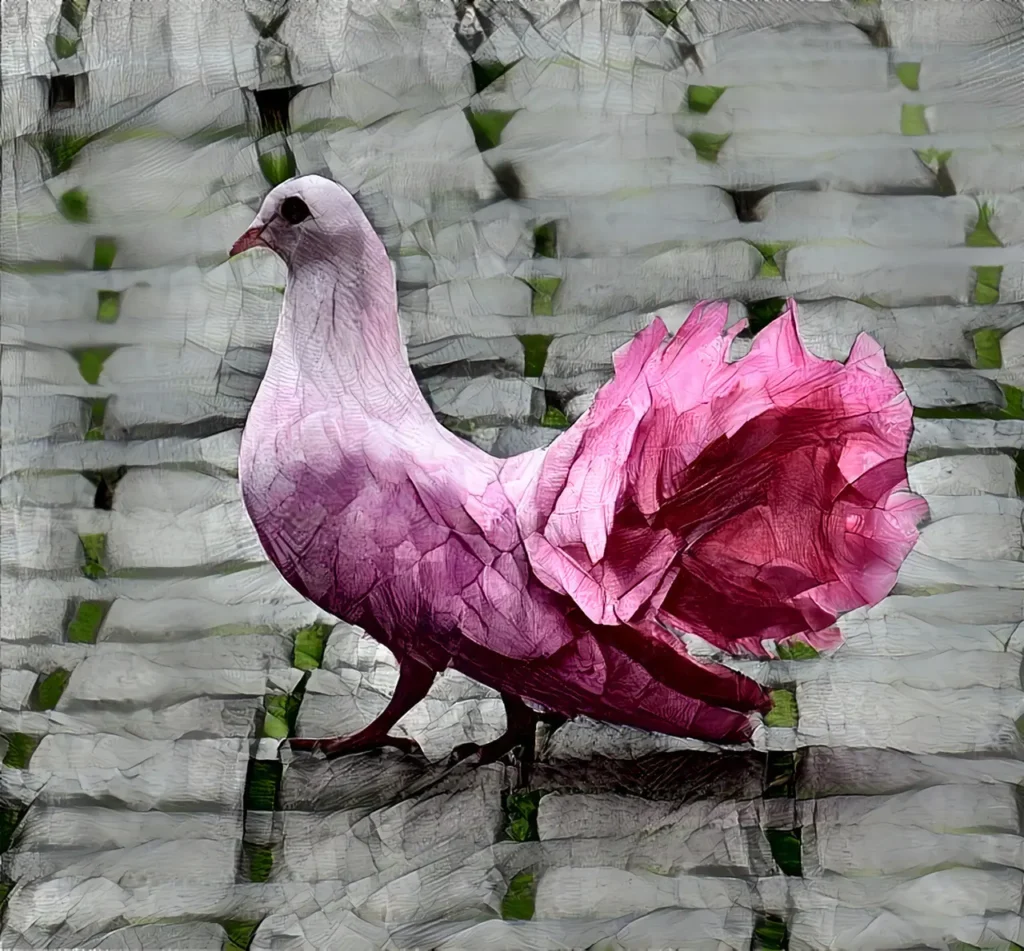
Breeding and Care
Breeding and caring for Fantail Pigeons require attention to their specific needs. Providing a spacious and secure aviary with access to fresh air and sunlight is essential for their well-being. Proper nutrition, including a balanced diet of grains, seeds, and fresh vegetables, ensures their health and vitality.
In terms of breeding, Fantail Pigeons are prolific breeders, and pairs often raise multiple clutches throughout the breeding season. The eggs usually hatch within 17 to 19 days, and both parents participate in caring for and feeding the chicks until they are old enough to fend for themselves.
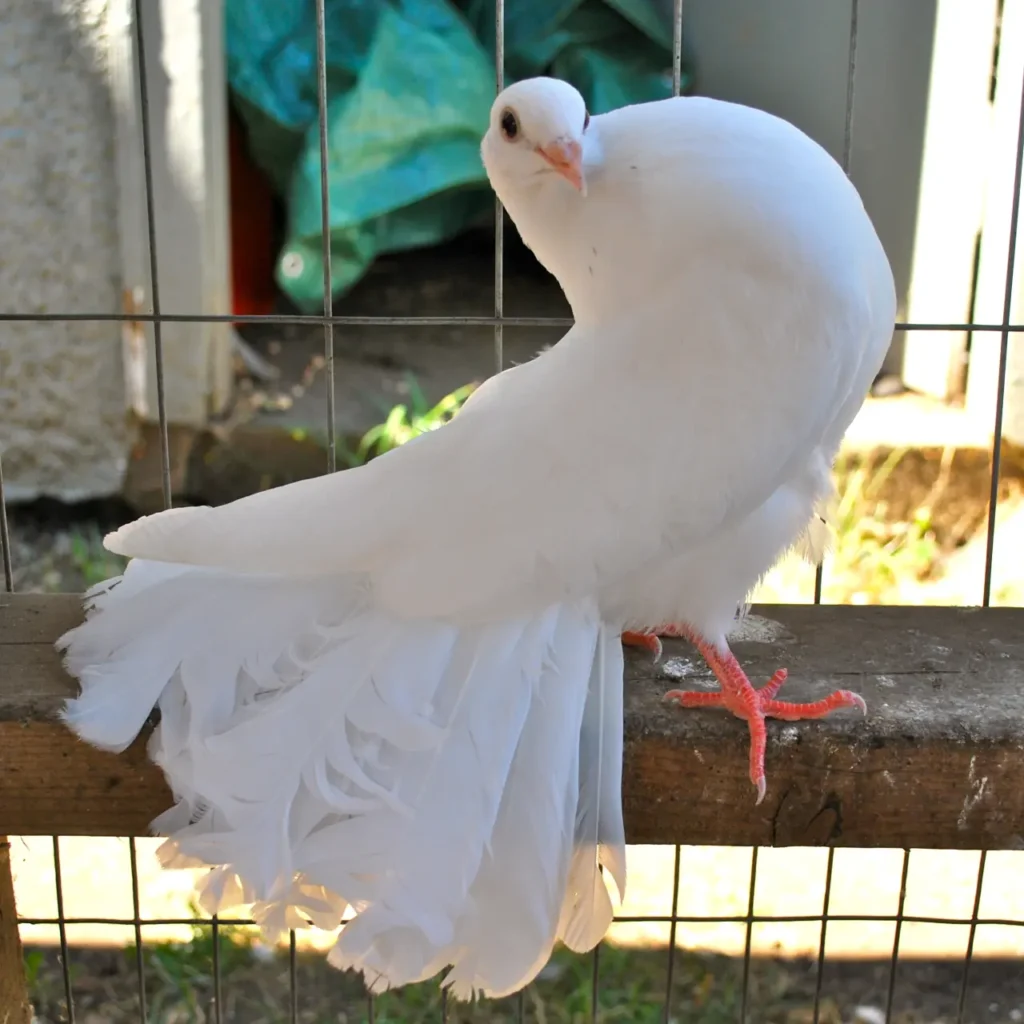
The Appeal of Fancy Pigeons
Fancy pigeons, including the Fantail Pigeon, hold a special place in the hearts of bird enthusiasts and breeders worldwide. The art of breeding and exhibiting these exquisite birds has become a passionate hobby and even a competitive pursuit in pigeon shows and competitions. Pigeon fanciers take pride in showcasing their birds’ unique traits, colors, and patterns, celebrating the diversity and beauty of these domesticated creatures.
The Fantail Pigeon stands as a living work of art, testament to the beauty that can be achieved through selective breeding and the admiration of nature’s wonders. With its elegant fan-shaped tail, graceful demeanor, and gentle temperament, this beloved fancy pigeon continues to enchant and inspire bird enthusiasts and artists alike. As we cherish and celebrate the Fantail Pigeon and other fancy pigeon breeds, we acknowledge the bond between humans and these elegant creatures, an enduring legacy that spans generations of admiration and devotion.
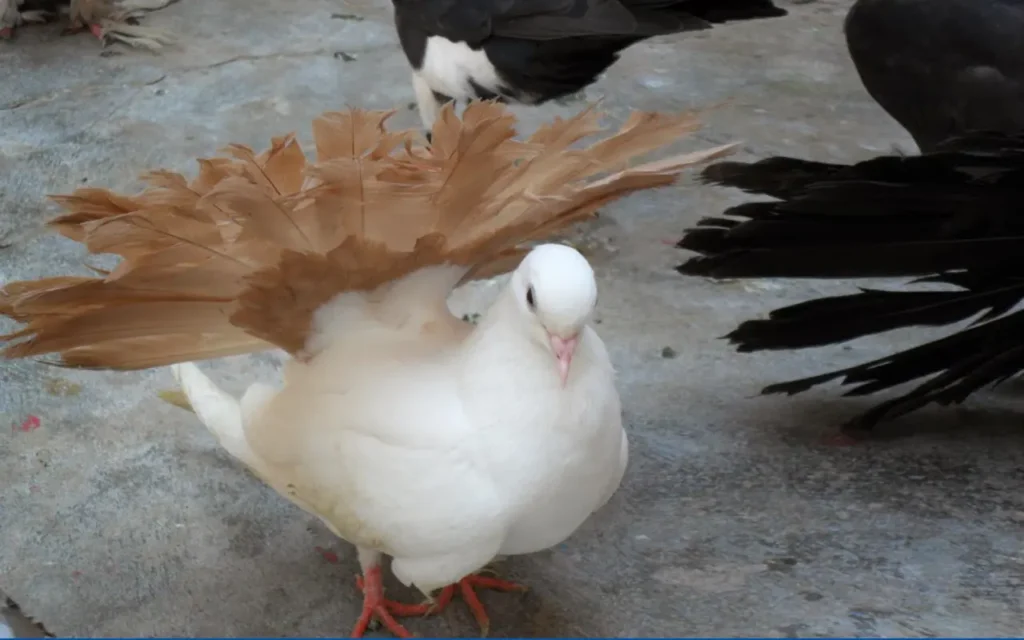
Popular Types of Fantail Pigeons
Fantail pigeons are a group of domestic pigeon breeds known for their distinctive fan-shaped tails and elegant appearance. Over the years, various Fantail pigeon breeds have been developed through selective breeding. Here are some popular types of Fantail pigeons:
- Indian Fantail: The Indian Fantail is one of the most well-known and widespread Fantail breeds. It has a prominent fan-shaped tail that can be held up high. They come in a variety of colors and patterns.
- English Fantail: The English Fantail is a breed that originated in England. It has a large and well-spread tail with abundant feathering. English Fantails are known for their elegant and graceful appearance.
- American Fantail: The American Fantail is a breed developed in the United States. It has a full, well-spread tail and a slightly more upright stance compared to other Fantail breeds.
- Thai Fantail: Also known as Siamese Fantail, this breed comes from Thailand. It has a slim body and a long, well-spread tail that forms a graceful arch.
- Chinese Fantail: The Chinese Fantail is a breed originating from China. It has a unique characteristic where the tail feathers are twisted or corkscrewed, giving it a distinct appearance.
- Australian Fantail: The Australian Fantail is a breed developed in Australia. It has a small, compact body and a well-spread tail with ample feathering.
- Lahore Fantail: The Lahore Fantail is a breed that originated in Pakistan. It has a large and well-spread tail that forms a circular shape when fully displayed.
- Brunner Pouter Fantail: This is a unique breed that combines characteristics of Fantails and Pouters. It has a fantail-like tail and a puffed-out chest like Pouters.
- Russian Fantail: The Russian Fantail is a breed developed in Russia. It has a full and well-spread tail, and the body is typically slim and sleek.
- Florentine Fantail: The Florentine Fantail is a breed known for its distinct feather pattern, which includes crescent-shaped markings on the wings and body.
These are just a few examples of the many Fantail pigeon breeds that exist around the world. Each breed has its own unique characteristics and appearance, but they all share the common feature of the fan-shaped tail, which makes them popular and admired by pigeon enthusiasts and fanciers.
